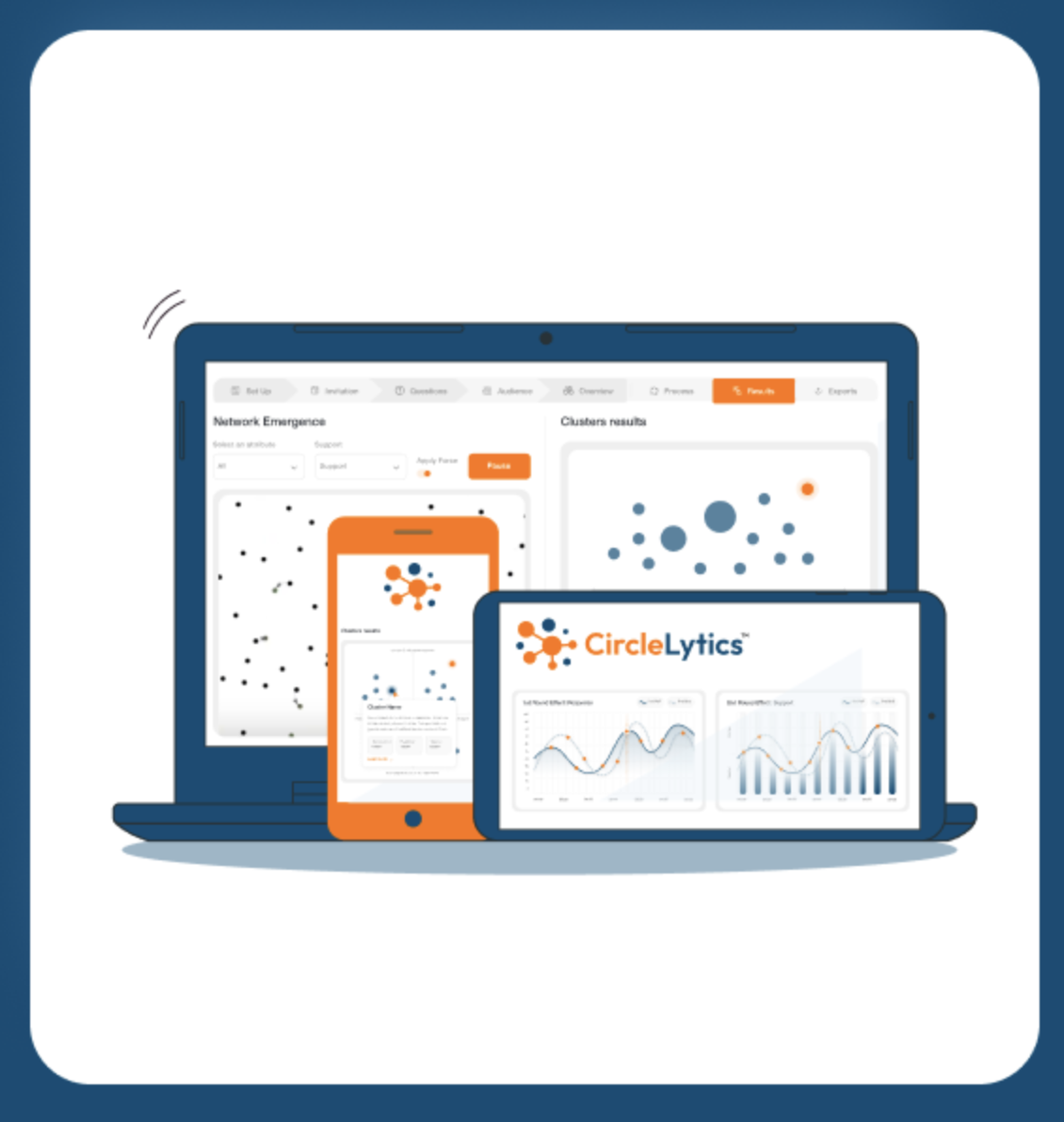Friends of CircleLytics
Why choose CircleLytics
Ready to lead with purpose and harness the power of your network? Start your journey with CircleLytics today.

From Challenge to dialogue ready questions
Leverage our QuestionDesignLab, augmented by AI, and proven models for strategy, change, retention, engagement, and more to select or craft powerful open-ended questions that spark insight and drive action—time and time again.

Two Rounds, One Breakthrough
Self-launch asynchronous dialogue at any scale, in two rounds, where people think deeply, learn from different perspectives, and often change their views—40 to 60% do—unlocking more reliable and richer outcomes than surveys or meetings ever could.

From Insight to Impact - Fast
Make decisions 90% faster as people clearly identify which actions make sense and the risks to watch for—boosting engagement, fostering connectedness, sparking innovation, and driving impactful change forward.
All of the Free version, plus:
- 1 User
- 1 Dialogue per month
- 2 Questions per dialogue
- All question types
- 100 invitees
- Access via dialogue link
- Restriction on mail extension
- Top 5 results
- Training videos
- Unsubscribe
- Delete data
- Circlelytics DPA
All of the Free version, plus:
- 10 Users
- 3 Admin users
- 10 Dialogues per month
- > 50 invitees
- Import mail addresses
- No question limit per dialogue
- Challenges + Models
- Routing
- CI Query on all results
- Top 5 + Bottom 5 results
- Attributes + Filtering
- AI recommended suggestions
- Project collaboration
- Recommendations
- QuestionDesignLab
- Custom SenderName
- Planning & reminders
- Your DPA
- Branding
and more...
All of the Business version, plus:
- Unlimited users
- Unlimited admin
- From 300 invitees
- Unlimited dialogues
- Pre-approved invitees
- NetworkEmergence AI
- Supervisor roles
- Attribute-based reporting
- Thought Leaders questions
- Single Sign On
- Custom sender domain
- Private Library
- SenseBuilder AI
- Import contributions
- Text message access
- Collect mail addresses
- Indentify influencers
Add-on: Advanced Analytics
- Cross-Silo Collaboration AI
- ReflectionAnalysis
- FastFinder
- BubbleCharts
- Extended Excel Exports
- NoveltySearch
- DiversityIndex
Key Aspects That Make Circlelytics Dialogue Stand Out

Deep engagement at scale. Any voice.
Captures input from everyone, not just the loudest voices. Internal, external, and genAI audiences.

Two round design with peer review
Help surface the best ideas through collective intelligence and reflection.

Data driven insights with qualitative depth
Goes beyond shallow metrics and emerges novel insights.

Bias reduction and psychological safety
Anonymity removes fear and hierarchy effects.

Fast, asynchronous and inclusive
No scheduling needed, Everyone participates on their own time.

Unleashes collective learning and drives action.
Participants inspire each other’s rethinking and surface actionable next steps.
CircleLytics vs Meetings, Workshops, And Surveys
(workshops, brainstorms,focus groups)
CircleLytics in practice:
Building strategy
Boards use CircleLytics to engage their workforce in building and regularly updating strategic plans, driving successful implementation, fostering trust, and improving retention—all in one process.
Operational challenges
Healthcare organizations use CircleLytics to engage frontline staff in identifying issues, fostering cross-team learning, and prioritizing actions with broad support.
Lead change
HR uses CircleLytics to break through engagement survey fatigue, empowering managers to collaborate with their teams to identify priorities and take effective action, while securing privacy.

Have a question ? Look here...
Get in touch with us
Our Location
Dr. Lelykade 22 - Unit 4, 2583CM The Hague, The Netherlands

Phone number
0031 (0)85 401 1161





